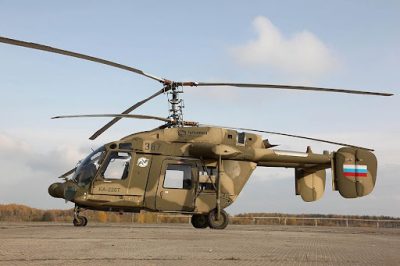The Russia-India Defense Cooperation Pact. India’s Purchase of the S-400 Missile Defense System

All Global Research articles can be read in 51 languages by activating the “Translate Website” drop down menu on the top banner of our home page (Desktop version).
To receive Global Research’s Daily Newsletter (selected articles), click here.
Visit and follow us on Instagram at @crg_globalresearch.
***
Russian President Vladimir Putin visited India on December 6. Cooperation on COVID-19, climate change, and military deals were topics of discussion. A 10-year defense cooperation pact and 28 agreements were signed.
Highly placed Russian defense sources speculated that the final deal for the Kamov Ka-226T light utility helicopters would be one of the major discussion agendas. This revelation was made by sources who had already confirmed that the delivery schedules for the S-400 anti-aircraft system would be finalized during Putin’s visit to New Delhi.
The Indian military desperately needs a light utility helicopter to replace the 1960-70s French-designed Cheetah and Chetak helicopters. Since these helicopters form the backbone of the Indian military on the border with China and Pakistan, maintenance, overhaul and rate of accidents are a huge concern. The Indian military is presently deficient by over 25% of Recce and Observation Helicopters. 77% of these helicopters have completed more than 30 years in service while the balance helicopters are approaching 50 years or have already completed 50 years. Also, the technical shelf life of the oldest helicopters will start terminating in 2023, exacerbating India’s shortage.
The initial projected requirement of new utility helicopters was 400, with 200 being procured from Russia and the rest by Hindustan Aeronautics Limited (HAL). In 2003, the Indian military issued a tender for procuring 197 Light Utility Helicopters. This was to be a mix of direct procurement and license production by HAL. In April 2007, the Eurocopter AS 550 C3 Fennec was announced as the likely winner but the offer was withdrawn in December 2007 due to allegations of procedural irregularities. A new Request for Proposal with the same requirements was again floated in 2008 and trials and evaluations were completed by 2011. However, there was no decision until 2014 when the tender was finally withdrawn in August.
It was only after a summit meeting between Indian Prime Minister Narendra Modi and Putin during the latter’s visit to India in October 2014 that the process was restarted. The Ka-226T was announced as the forerunner in an Indian Defense Acquisition Council notification, underlining the importance of the summit meeting in making this selection. An Inter-Governmental Agreement (IGA) was signed with Russia in December 2015 to procure 200 Ka 226T. Out of these, 60 were to be inducted in fly-away condition and the remaining 140 were to be manufactured in India. The delivery of the first helicopter was scheduled in 36 months, with the entire project being completed in eight years from the date of signing, i.e. 2023.
However, the case did not progress beyond the Technical Evaluation Stage primarily due to disagreements over the proportion of indigenous content. As per the IGA, 70% of content is Russian or outsourced. The remaining 30% has to have over 70% of indigenous content. This leads to a figure of approximately 21% Indian-made for the entire helicopter. However, as per HAL, the Russians initially offered a maximum of 18%. Effectively, India’s procurement process has been left hanging due to a disagreement of just 2-3% of indigenous content.
The Indian military has already grounded a total of 280 helicopters after a horrific accident in November 2016 led to the death of three aviators. A total of 19 personnel were killed in aviation accidents between 2012-21, once again demonstrating the importance of India needing to upgrade its aviation sector.
The price of a single Ka-226T in flyaway condition is $6 million. However, the assembled helicopter in India will cost close to $11 million due to associated costs of land acquisition, labor, technology transfers and water and electricity requirements. However, importing the entire lot of the original 200 will force India to depend completely on Russia for spare parts and maintenance.
Although HAL was granted clearance for a limited series of 12 LUH indigenous helicopters (engines still dependent on French expertise), with the first batch likely to be inducted by December 2022, there are a number of operational and technical issues. The tail rotor system of the LUH can lead to disastrous consequences when operating in high altitudes, the most likely area of employment for these platforms. Also, the Autopilot is still not incorporated in these helicopters, an anathema to pilots operating in the 21st century.
As long as these serious concerns are not addressed, the Indian military faces a serious operational challenge, especially as tensions with Pakistan and China remain. The induction of the Ka-226 is now an existential operational necessity since LUH helicopters are not in a state to be mass produced and inducted to high altitude operational areas by the time the technical shelf life of the oldest Cheetah/Chetak helicopters start terminating in 2023.
Putin’s trip to New Delhi and the confirmation of the fact that the final agreement for Ka-226T was negotiated and sealed, puts to rest a number of doubts over India’s aviation capabilities in the long run. More importantly, it further consolidates New Delhi’s relations with Moscow at a time when it is strengthening relations with Washington to oppose Beijing.
*
Note to readers: Please click the share buttons above or below. Follow us on Instagram, @crg_globalresearch. Forward this article to your email lists. Crosspost on your blog site, internet forums. etc.
Paul Antonopoulos is an independent geopolitical analyst.
Featured image is from aex.ru/

